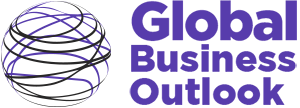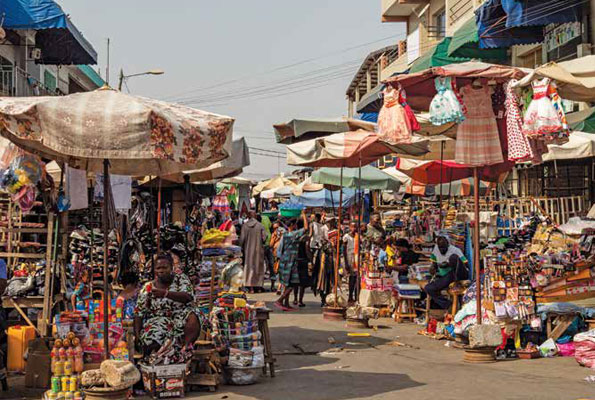Close to 100 Togolese business leaders travelled to China in March 2025 on a trade mission aimed at strengthening economic ties and exploring new opportunities. The initiative, led by the Togo Chamber of Commerce and Industry (CCI-Togo) in partnership with the Hebei Enterprise Culture Association, saw the delegation focus on key industries such as construction, mechanical engineering, civil engineering, agriculture, livestock, automotive, and packaging.
What if we say that Togo, a small West African country, one of the world’s biggest phosphate producers, is now displaying a resurgent economy and the prospect of more to come? This copy will shed more light on this.
A tale of revival
Togo is battling security challenges, arising from attacks by bandits in the northern region and sea pirates’ raids on the coastal south, while there are resentments against a decades-old political hegemony.
However, these headwinds have not discouraged foreign direct investment (FDI) arrivals. A leading foreign company operating in Togo is Heidelberg Material, which is planning new investments in environmental and industrial sectors and funding sustainable solutions in cement production using alternative materials.
Agriculture is also attracting investment. In 2021, Olam, the Singapore-based agro-food group, acquired a 51% majority stake in Nouvelle Societe Cotonniere du Togo (NSCT) for €15.3 million as part of the government’s privatisation of the state-owned cotton company.
Designed to boost cotton production, which had declined due to bad weather and poor seed quality, the deal left the government and the federation of cotton farmers with 24% and 25% stakes in the company, respectively.
In 2023, another Singaporean company, NutriSource, started NPK (nitrogen, phosphorus, potassium) fertiliser production in Togo. The new plant is part of a bigger project valued at CFA4.9 billion ($7.8 million). In the energy sector, France’s TotalEnergies is the leading retailer of petroleum products.
Chinese and South Korean companies have entered the fray as well, including Leopard Moto (bicycle sales), Amina Togo, West Africa Battery (batteries for bikes and cars), YSO Dairy Products Manufacturing, Sofina (nylon thread, fishing nets, spool thread, packages, ropes) and China Sinomach-Hi West Africa (equipment manufacturing).
To sweeten things further, in December 2024, the International Monetary Fund (IMF) approved the release of approximately $58.7 million for Togo, as part of the first review of its Extended Credit Facility (ECF) programme. This funding is intended for budget support and is part of a larger 42-month agreement worth $390 million, which was established in March 2024.
The facility will help strengthen the Togolese economy, making it more resilient to crises like COVID-19 and rising food and fuel prices on a global scale. The IMF reported that Togo’s economic growth was 5.6% in 2023 and is expected to remain at 5.3% in 2024-2025. In addition, overall inflation decreased to 3.3% in October 2024, down from much higher levels in previous years.
The European Union (EU) will also support the Togolese State budget with CFA12.8 billion. The funding will be used to implement the “Togo 2025 Roadmap.” The EU-Togo partnership, which extends until 2027, is also expected to mobilise several hundred million euros for priority projects through budget support, loans, grants, guarantees, and technical assistance.
Roadmap for the future
A lively FDI contribution gives Togo a favourable economic outlook, augmented by structural reforms and critical investment projects, according to the African Development Bank (AfDB). The latter now expects real GDP to grow 5.3% in 2024 and 6% in 2025, driven by a dynamic agricultural sector and private investment, although the IMF projects growth to “soften” slightly to 5.3% over 2024-2025 due to fiscal consolidation before recovering to its long-term trend, projected at 5.5% annually.
Togo’s National Development Plan 2021-2025, also known as the Presidential Roadmap, envisions the country having innovative and sustainable solutions in identifying financing resources, attracting more investments with great socioeconomic impact, and consolidating the country’s strategic positioning in Africa as an investment destination. The roadmap also emphasises developing infrastructure to support economic activity, including transportation and energy, along with higher government spending and private-sector investment.
In 2024, Global Finance reported that “underpinning these projections is some solid infrastructure. Togo has one of the best ports in West Africa; in three years, the Port of Lome has achieved a significant drop in congestion thanks to improved berthing windows, maintaining a 48-hour ship turnaround time. As a result, it has become a port of choice for importers even from Nigeria as well as for landlocked countries in the Sahel region, including Niger and Burkina Faso.”
In July 2021, the World Bank approved a $470 million loan for the construction of the Lome-Ouagadougou-Niamey corridor, 1,065 kilometres of road joining the capital cities of Togo, Burkina Faso, and Niger. The project will optimise the use of the Port of Lome. IMF, on its part, has helped trigger private investment and a growing level of activity in light manufacturing and agribusiness.
Industrial activities in Togo have traditionally been driven by mining, especially phosphate processing, which accounted on average for more than 20% of GDP before the 2000s. However, a collapse in phosphate production in that decade, together with sectoral governance constraints and sharp fluctuations in the market price of phosphate, dropped the sector’s share of GDP to about 15% and reduced its contribution to growth from 0.8 percentage points to 0.2. This is what has made FDI inflow critical for the country’s economy.
Heidelberg Material has invested €400 million through Scantogo, which produces clinker, an ingredient in cement; Granutogo, a gravel crushing unit; and Cimtogo, a cement plant. In September 2024, Heidelberg announced its plan to invest in the environmental and industrial sectors, funding sustainable solutions in cement production using alternative materials. The group aims to produce zero-carbon cement as part of its commitment to environmental sustainability.
Togo’s exports are primarily composed of minerals, along with industrial and agricultural products. The main sources of export earnings are minerals, which accounted for 22% of total goods exports between 2019 and 2021, followed by plastics, textiles and clothing, and agricultural products.
Concerns linger as well
If Togo wants its economic revival to be a success story, it needs to fight two elements: terrorist threats and discontent with an undemocratic political power structure. For example, insecurity in Togo’s northern Savanes region remains a business concern. Terrorist incursions from neighbouring countries have often forced residents to flee. After the first major attack in May 2022, the government declared a state of emergency; in March 2024, the government extended emergency rule for another year.
“The attacks have lulls, then flare up again,” says Confidence MacHarry, senior geopolitics analyst at SBM Intelligence, a security research firm in Lagos, Nigeria, who added, “In August, we heard that Togo lost an area in its northern border with Benin. On its southern sea border, Togo also faces problems with pirates in the Gulf of Guinea. So far, the problem from the north has not reached the south.”
“That said, Togo remains relatively safe. While security threats in the northern Sahel threaten its trade with countries in that region, the good thing about Togo is that it is sandwiched among countries whose geographies are the rough of the north. So, if a particular area is troubled, it can easily redirect its international trade,” MacHarry argued.
In March 2024, Togo adopted a new constitution that changed its governing structure from presidential to parliamentary. Under the new system, Parliament will elect the president. However, the opposition parties have accused the ruling party, Union for the Republic, of playing gimmicks with the change, which they say was designed to increase President Faure Gnassingbé’s stay in office through a shift in title. Togo’s next presidential election is slated for 2025.
Marcel Okeke, former chief economist of Nigeria’s Zenith Bank, said, “All this suggests future political instability that may threaten Togo’s economic achievements, if it has not already. Togo is contending with a political hegemony that is stagnating the country’s economic progress,” remarked.
Togo’s economic revival shows promising potential, driven by strategic foreign investments and infrastructure development. However, overcoming security challenges and political instability will be crucial for sustaining long-term growth and stability.



